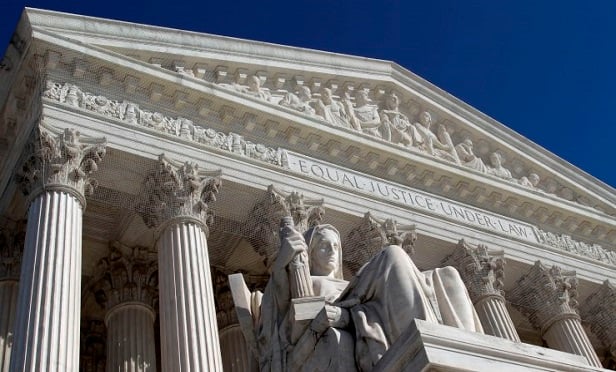 (Photo: J. Scott Applewhite/AP)
(Photo: J. Scott Applewhite/AP)
The U.S. Supreme Court has agreed to hear health insurers' arguments about why they believe the United States of America owes them about $12 billion in Affordable Care Act risk corridors program subsidy payments.
The court today said that it will combine three separate appeals — filed by Maine Community Health Options, Moda Health Plan Inc. and Land of Lincoln Mutual Health Insurance Company.
The court has allotted a total of one hour of its time for oral arguments.
The court announced its decision to take up the case today, in an order list document.
ACA history
From 2008 through 2010, when Democrats were in control of both the House and the Senate, they made the ACA risk corridors program a small part of their ACA legislative package.
One of the ACA drafters' main goals was to help sick people buy health insurance, without having to worry about their applications being rejected, and without having to pay higher premiums.
Health insurers had been using health-based sales decisions and pricing decisions to try to hold down claim costs.
When the ACA drafters took those defenses against claim costs away, they tried to compensate by creating mechanisms that would send health insurers many young, healthy enrollees, and mechanisms for protecting health insurers against unexpected or unfair spikes in claim costs.
A new, temporary ACA reinsurance program was supposed to protect issuers of individual major medical coverage against individual enrollees with catastrophic claims.
A permanent risk-adjustment program was supposed to use cash from issuers with younger, health enrollees to compensate issuers with older, sicker enrollees.
The temporary risk corridors program was supposed to encourage insurers to sell coverage through the ACA public exchange system, by using cash from the thriving exchange plan issuers to help the struggling issuers, for plans years 2014, 2015 and 2016.
ACA risk corridors program history
In theory, the risk corridors program was supposed to use cash from the healthy issuers to make the payments.
In reality, thriving issuers have made only enough payments for the program managers, at the U.S. Department of Health and Human Services (HHS), to meet only a small portion of the program obligations for 2014.
When Republicans took control of the House, and later the Senate, they put provisions in must-pass spending authorization bills that prohibited HHS from using any source of cash other than exchange plan issuer payments to meet the risk corridors program obligations.
ACA opponents argued that the ACA risk corridors program and the two other ACA insurer subsidy programs were efforts to funnel cash from a bad, unconstitutional program to insurers.
Americans for Tax Reform (ATR), for example, called the ACA insurer subsidy programs a form of corporate welfare. The programs were “created to hide the true costs of coverage on the exchange and prop up insurers by redistributing funds from different groups to Obamacare exchanges,” according to an article ATR analysts posted in 2016.
Lawyers for the United States have argued that the health insurers participating in the ACA public exchange program had an agreement with the federal government in connection with the risk corridors program, but not a formal contract.
Health insurers have argued that they believed that they had what amounted to a contract, and that Congress should not be able to back away from payment obligations the federal government has assumed by simply refusing to provide money to make the payments, without passing a law canceling the obligations.
The Supreme Court proceedings
Noel Francisco, the U.S. solicitor general, has been serving as the counsel of record for the United States for the ACA risk corridors appeals.
The Blue Cross and Blue Shield Association has been supporting the plaintiff health insurers in all three cases.
Moda Health is the health insurer with the longest list of “other” parties associated with its case.
The list of parties officially listed as being associated with the Moda Health case includes America's Health Insurance Plans; the Association for Community Affiliated Plans; a group of health plans that includes Highmark Inc.; the National Association of Insurance Commissioners; a group of 18 states and the District of Columbia; a group of economists; and the U.S. Chamber of Commerce.
Resources:
A copy of the Supreme Court's order list document is available here.
A copy of the Maine Community Health Options petition is available here.
READ MORE:
DOJ urges Supreme Court to reject health insurers' $12B risk-corridor payment challenge
New HRA rules could allow businesses to circumvent ACA employer mandate
© 2025 ALM Global, LLC, All Rights Reserved. Request academic re-use from www.copyright.com. All other uses, submit a request to [email protected]. For more information visit Asset & Logo Licensing.







